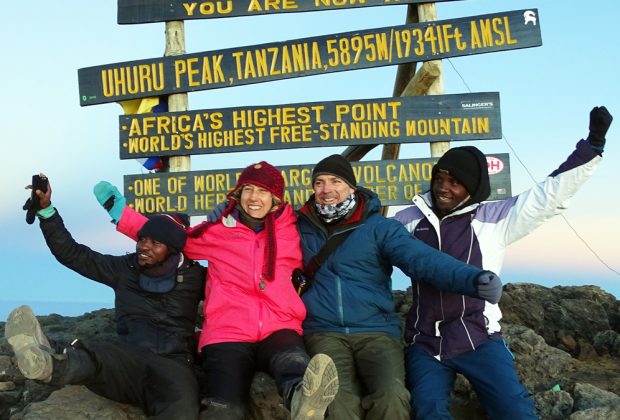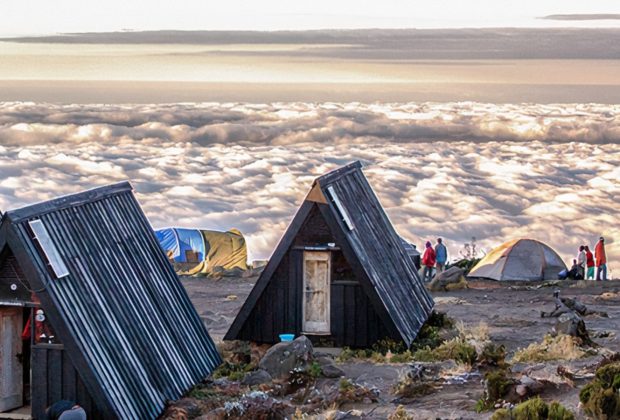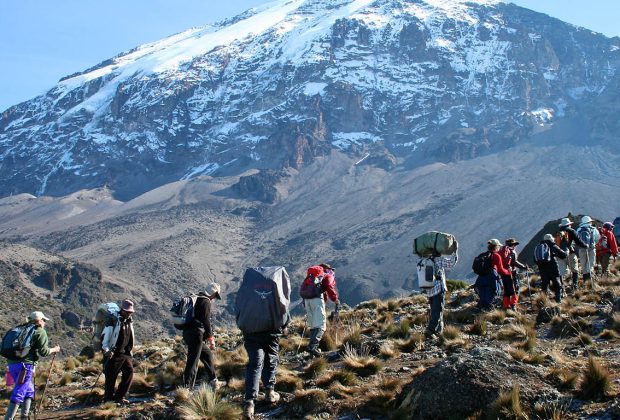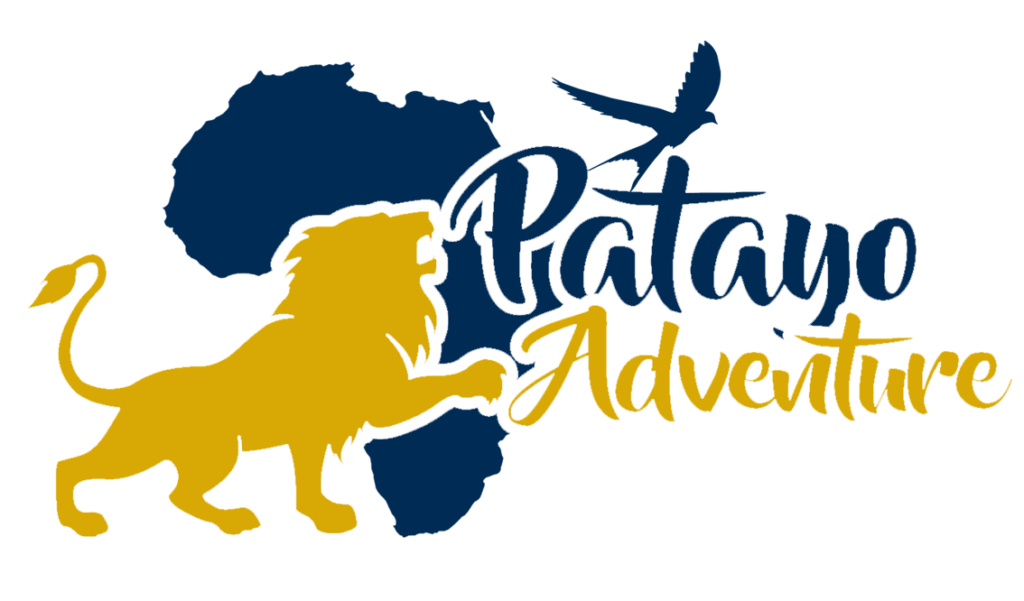6-Day Kilimanjaro Trekking –Rongai Route + 2 Nights Hotel Stay
Tour Overview
The Rongai route serves as the primary path beginning from the northern slope of Kilimanjaro. Despite being less frequented by climbers, this section of the mountain is no less captivating than the popular southern and western routes. We recommend Rongai to those seeking more secluded climbing experiences. Accessing the trailhead – Nalemuru Gate – typically takes around 3-4 hours from Aishi Machame Hotel. Rongai is also unique as it passes by Mawenzi, one of Kilimanjaro’s three volcanic cones and the third highest peak in Africa. The return journey follows through Marangu, allowing you to witness both sides of the mountain. While six and seven-day programs are available, opting for a longer duration is advisable for better acclimatization progress.



Day 0 | Arrival:
Upon arrival at Kilimanjaro International Airport (JRO), you’ll be welcomed by a representative from Kiliholidays. They will accompany you to Weru Weru River Lodge or a similar accommodation option. The lodge offers comfortable amenities including cozy rooms, hot water, friendly staff, a swimming pool, and Internet access. In the evening, our managers will conduct a briefing to ensure you are ready for the climb.
- Bed & Breakfast Note: Check-in starts at 1:00 PM.
Day 1: Trekking from Marangu Gate to Mandara Hut:
In the morning, your guide and mountain support crew will meet you at the hotel for a brief meeting. Then, you’ll travel by vehicle to the eastern entrance of Kilimanjaro National Park, Marangu Gate (1,860 m). After obtaining climbing permits and registering, the group will embark on a trek to Mandara Hut (2,700m). The trail passes through the rainforest, so be sure to pack spare clothes and raincoats. Upon arrival at the camp, the support crew will assist with setup and lunch. You’ll spend the night in special huts along the Marangu route. Follow instructions carefully as it’s your first day at altitude.
- Lunch;
- Dinner;
- Elevation Gain: 1,860 m to 2,700 m;
- Hiking Time: 5-7 hours;
- Distance: 11 km;
- Difficulty: Medium;
- Habitat: Rainforest
Day 2: Trekking from Mandara Hut to Horombo Hut:
After breakfast, depart Mandara Hut for a moderate trek to Horombo Hut (3,720 m). Enjoy views of Kibo and Mawenzi volcanoes along the way. After lunch, engage in an acclimatization hike towards Kibo Hut before returning to Horombo Hut for dinner. Note: Acclimatization hikes are essential for summit success and altitude sickness prevention.
- Breakfast;
- Lunch;
- Dinner;
- Acclimatization hike: Change in Elevation: Horombo Hut (3,720 m) — Destination point in route to Kibo Hut (3,920 m);
- Hiking Distance: 2.5 km;
- Hiking Time: 1–2 hours;
- Elevation: 2,700 m to 3,720 m;
- Hiking Time: 5-6 hours;
- Distance: 10 km;
- Difficulty: Medium;
- Habitat: Moorland
Day 3: Trekking from Horombo Hut to Kibo Hut:
After breakfast, trek to Kibo Hut (4,700 m). Although not difficult, maintain a steady pace for the summit push. After lunch, rest, avoid strenuous activity, and stay hydrated.
- Breakfast;
- Lunch;
- Dinner;
- Elevation Gain: 3,720 m to 4,700 m;
- Hiking Time: 4-8 hours;
- Distance: 10 km;
- Difficulty: High;
- Habitat: Alpine desert
Day 4: Trekking to Uhuru Peak and Descent to Horombo Hut:
Depart Kibo Hut for the trek to Uhuru Peak (5,895 m). While physically moderate, altitude poses a challenge. Each pair of climbers will have their guide. After reaching Uhuru Peak, descend to Kibo Camp, rest, then continue to Horombo Hut. Note: Most accidents occur during descent, so pay attention to your feet.
- Breakfast;
- Lunch;
- Dinner;
- Elevation Change: Varies
Day 5: Descent from Horombo Hut to Marangu Gate
After breakfast, begin your descent from Horombo Hut to Marangu Gate. The trail takes you through varied terrain, offering glimpses of the diverse landscapes of Kilimanjaro. Upon reaching Marangu Gate, complete any necessary formalities and celebrate your successful climb with your team. Then, you’ll be transferred back to Weru Weru River Lodge or similar accommodation for a well-deserved rest and celebration.
- Breakfast;
- Descent Time: 5-6 hours;
- Distance: 20 km;
- Difficulty: Medium
Day 6: Departure
Relax at the lodge and prepare for your departure. Depending on your flight schedule, you may have time to explore the surroundings or engage in leisure activities. Later, you’ll be transferred to Kilimanjaro International Airport for your onward journey.
Note: Hotel check-out is at 11:00 AM. In case of a late flight, arrangements can be made for extended stay with additional charges.
Inclusions:
- Accommodation: Lodging at Weru Weru River Lodge or similar.
- Meals: Breakfast, lunch, and dinner provided during the trek.
- Transportation: Transfer from Kilimanjaro International Airport to the lodge.
- Trekking Support: Experienced guide and mountain support crew.
- Climbing Permits: Acquisition of necessary permits for Kilimanjaro National Park.
- Equipment: Tents, sleeping bags, and other necessary camping gear.
- Activities: Trekking from Marangu Gate to Mandara Hut, Mandara Hut to Horombo Hut, Horombo Hut to Kibo Hut, and summiting Uhuru Peak.
- Briefings: Orientation and briefing sessions conducted by tour managers.
- Safety Measures: Registration with search and rescue service, as well as guidance on altitude sickness prevention.
- Certificates: Commemorative certificates upon successful completion of the trek.
Exclusions:
- International Flights: Airfare to and from Kilimanjaro International Airport.
- Travel Insurance: Personal travel insurance covering medical expenses, trip cancellations, and emergencies.
- Personal Expenses: Expenses for additional meals, beverages, souvenirs, and optional activities.
- Gratuities: Tips for guides, porters, and other staff members.
- Accommodation Beyond Itinerary: Any additional lodging required before or after the scheduled trekking dates.
- Airport Transfers: Transfers to the airport upon departure beyond the designated schedule.
- Visa Fees: Fees associated with obtaining entry visas for Tanzania, if applicable.
- Medical Expenses: Costs incurred for medical treatment or medications during the trek.
- Optional Activities: Any additional excursions or activities not specified in the itinerary.
What is Mount Kilimanjaro?
- Mount Kilimanjaro is the highest peak in Africa, located in Tanzania. It is a dormant volcano and one of the most iconic mountains in the world.
How tall is Mount Kilimanjaro?
- The summit of Mount Kilimanjaro, called Uhuru Peak, stands at an elevation of 5,895 meters (19,341 feet) above sea level.
How long does it take to climb Mount Kilimanjaro?
- The duration of a Kilimanjaro climb varies depending on the route chosen. Most climbs typically range from 5 to 9 days.
What are the different routes up Mount Kilimanjaro?
- There are several routes to the summit of Kilimanjaro, each with its own characteristics and scenery. Popular routes include the Marangu, Machame, Lemosho, Rongai, and Northern Circuit routes.
Is climbing Mount Kilimanjaro difficult?
- Climbing Kilimanjaro is challenging due to its high altitude, but it doesn’t require technical climbing skills. However, climbers should be physically fit and prepared for the rigors of high-altitude trekking.
Do I need a guide to climb Mount Kilimanjaro?
- Yes, it is mandatory to have a registered guide accompany you on your Kilimanjaro climb. Guides are essential for safety, navigation, and providing support throughout the trek.
When is the best time to climb Mount Kilimanjaro?
- The best times for climbing Kilimanjaro are during the dry seasons, which are typically from late June to October and from December to March. These months offer clearer skies and better trekking conditions.
What should I pack for climbing Mount Kilimanjaro?
- Essential items for climbing Kilimanjaro include proper clothing for varying temperatures, sturdy hiking boots, a good quality sleeping bag, trekking poles, personal medications, and other necessary gear as recommended by your tour operator.
What are the risks of climbing Mount Kilimanjaro?
- The main risks of climbing Kilimanjaro include altitude sickness, which can affect anyone regardless of fitness level, as well as other potential hazards such as extreme weather conditions and physical exhaustion.
Do I need to train before climbing Mount Kilimanjaro?
- Yes, it is highly recommended to undergo physical training and preparation before attempting to climb Kilimanjaro. This can include cardiovascular exercises, strength training, and hiking to build endurance and fitness levels.
